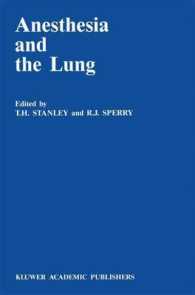Full Description
The catalogue for The power with which we leap together. Women artists in Spain and Portugal between dictatorship and democracy stems from an exhibition held at IVAM - Institut Valencià d'Art Modern, in partnership with CAM and curated by Giulia Lamoni and Patricia Mayayo.
Bringing together works by 59 renowned Iberian women artists, the exhibition examines the work created during the pre-revolutionary period in Portugal, before the Carnation Revolution in 1974, and in Spain, prior to the death of the dictator Francisco Franco, in 1975. In both countries, women had already started to challenge the established order, and there was a strong feeling of sisterhood on either side of the border.
In addition to the curatorial text, the publication features four essays by prominent Portuguese and Spanish researchers, interspersed with images of several of the works on display, spread through the nine sections that also structure the exhibition.
With design by the artist Dayana Lucas, each essay is jointly written by a Spanish and a Portuguese researcher, thus forging relationships and allowing for the examination of themes that have been little studied until now: abstractionism in the work of women artists between 1960 and 1970, feminism in Iberian pop art, the mobility of women artists in the Iberian Peninsula in the final decades of the Cold War, and a proposed dialogue between the two countries through artists' books.
Contents
Foreword
Curatorial text
Essays
Reproduction of some the works in the exhibition
Complete list of works in the exhibition







